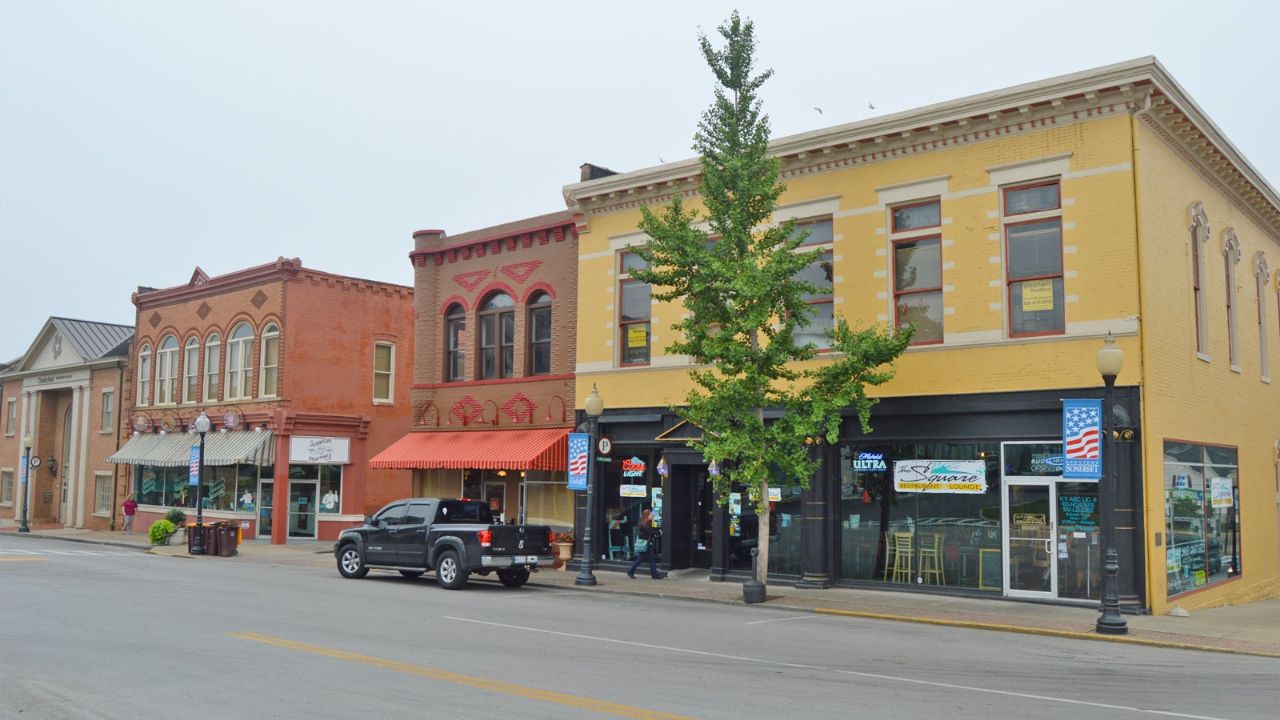Kentucky is a state with a rich history, culture and natural beauty. But not all of its towns are thriving in the 21st century. Some of them are facing population decline, economic hardship and social challenges that make them less attractive for residents and visitors alike. Here are seven Kentucky towns that people are fleeing as soon as possible, according to the latest census data.
Bell County
Bell County, located in the southeastern corner of the state, bordering Virginia and Tennessee, had the largest population drop in the state, losing 16% of its residents between 2010 and 2020. The county, which includes the city of Middlesboro, has been struggling with poverty, unemployment, drug abuse and poor health outcomes for decades.
The county’s median household income is $25,000, less than half of the state average, and its poverty rate is 35%, more than double the state average. The county also ranks among the worst in the state for life expectancy, obesity, diabetes, heart disease and cancer.
Owsley County
Owsley County, situated in the heart of the Appalachian Mountains, had the second-largest population decline in the state, losing 14.8% of its residents between 2010 and 2020. The county, which has no incorporated towns, is one of the most isolated and impoverished counties in the nation.
The county’s median household income is $19,000, the lowest in the state and one of the lowest in the country, and its poverty rate is 38%, the highest in the state and one of the highest in the country. The county also suffers from a lack of infrastructure, education, health care and economic opportunities.
Cumberland County
Cumberland County, located in the south-central part of the state, bordering Tennessee, had the third-largest population decline in the state, losing 14.1% of its residents between 2010 and 2020. The county, which includes the town of Burkesville, has been hit hard by the loss of manufacturing jobs, the decline of agriculture and the outmigration of young people.
The county’s median household income is $28,000, well below the state average, and its poverty rate is 25%, above the state average. The county also faces challenges in providing adequate health care, education and public services to its residents.
Knott County
Knott County, located in the eastern part of the state, in the coal-mining region, had the fourth-largest population decline in the state, losing 12.8% of its residents between 2010 and 2020. The county, which includes the town of Hindman, has been devastated by the collapse of the coal industry, which was once the main source of income and employment for the county.
The county’s median household income is $27,000, well below the state average, and its poverty rate is 31%, well above the state average. The county also struggles with environmental degradation, opioid addiction, low educational attainment and poor health outcomes.
McCreary County
McCreary County, located in the south-central part of the state, bordering Tennessee, had the fifth-largest population decline in the state, losing 11.9% of its residents between 2010 and 2020. The county, which includes the town of Whitley City, has been affected by the decline of the timber industry, the lack of economic diversification and the exodus of young people.
The county’s median household income is $21,000, the second-lowest in the state, and its poverty rate is 37%, the second-highest in the state. The county also has high rates of crime, drug abuse, illiteracy and chronic disease.
Magoffin County
Magoffin County, located in the eastern part of the state, in the Appalachian Mountains, had the sixth-largest population decline in the state, losing 11.8% of its residents between 2010 and 2020. The county, which includes the town of Salyersville, has been impacted by the downturn of the coal industry, the lack of infrastructure and the departure of young people.
The county’s median household income is $24,000, the third-lowest in the state, and its poverty rate is 32%, the third-highest in the state. The county also faces issues such as poor road conditions, limited access to health care, low educational attainment and high unemployment.
Harlan County
Harlan County, located in the southeastern part of the state, in the coal-mining region, had the seventh-largest population decline in the state, losing 11.7% of its residents between 2010 and 2020. The county, which includes the city of Harlan, has been suffering from the decline of the coal industry, which has resulted in job losses, income losses and population losses.
The county’s median household income is $26,000, well below the state average, and its poverty rate is 29%, well above the state average. The county also deals with environmental problems, drug addiction, crime and health disparities.
Conclusion
These seven Kentucky towns are examples of the challenges that many rural communities face in the modern era. They are losing population, income, jobs and opportunities, while facing multiple social, economic and health problems. These towns need more investment, innovation and support from the state and federal governments, as well as from the private and nonprofit sectors, to reverse their decline and revitalize their potential. Otherwise, they may continue to lose their residents, their identity and their future.

